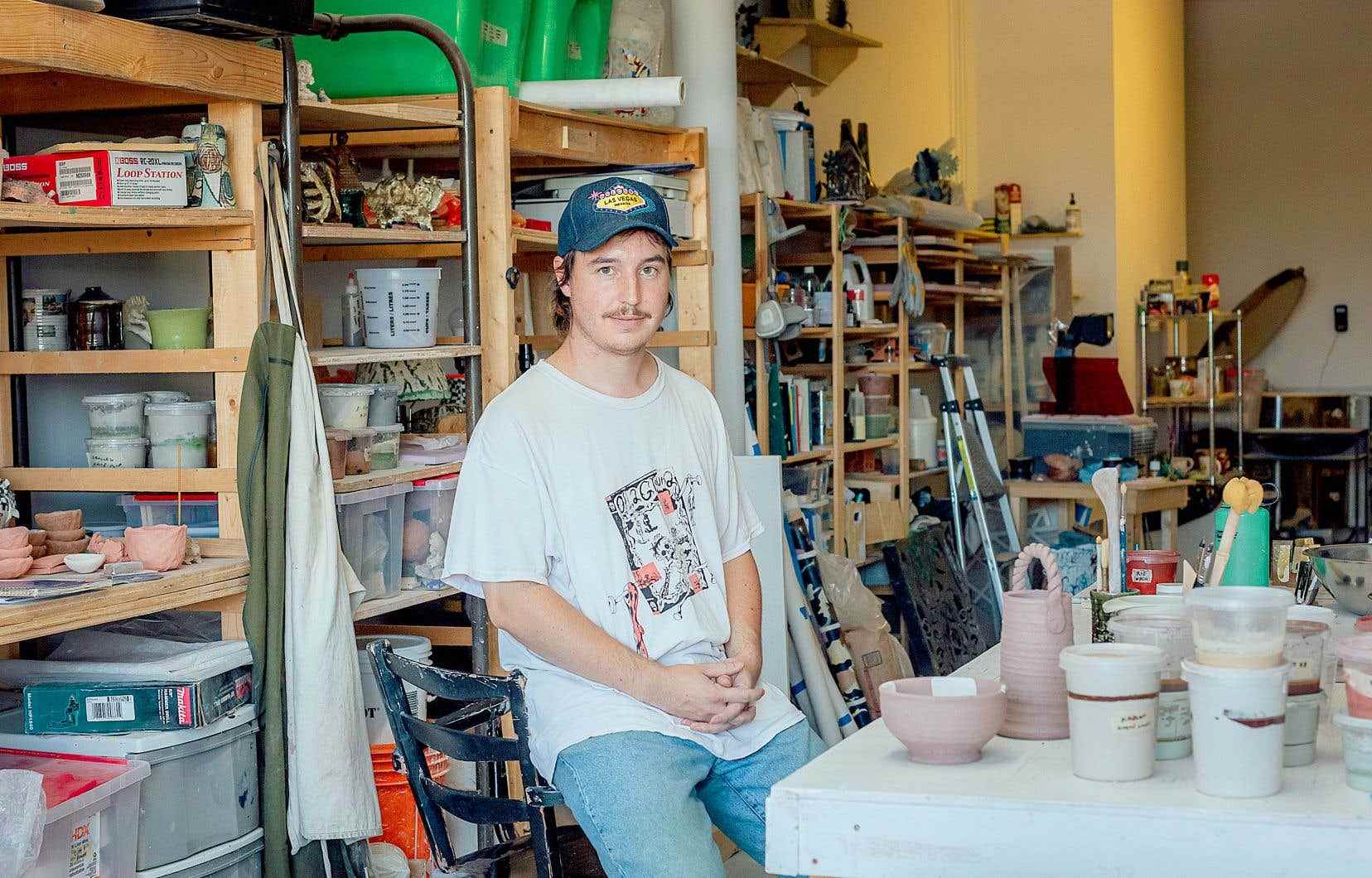Ceramics, textiles, beading… Artistic practices previously considered “crafts” are now turning to more experimental forms and are more important than ever in the world of contemporary Quebec art. We see more of them in museums, collectors are asking for more, and we can find them at the Montreal Paper fair next week.
“When I started my studies in ceramics, I felt a first wave of interest, but today, even more people are trying their hand, because everything is to be invented,” says Trevor Baird, a Montreal ceramist. born in British Columbia met in his studio, rue Chabanel.
This artist in his early thirties offers “unexplored” dimensions in Quebec for his medium of clay and glaze, according to Sophie Latouche, curator at the Projet Pangée gallery who represents him. “Trevor uses the vase and repetition a lot. He plays with the idea of transforming functional industrial objects into sculptural works,” she says.
Colorful vases, disproportionate lamp bases and containers of all kinds cover the many shelves of the artist’s motley studio. Known for imprinting comic book-inspired designs onto traditionally functional objects, Trevor Baird challenges the very notion of craftsmanship in his practice.
Trevor Baird is also very popular today. In particular, he presented an imposing installation of vases at the exhibition The machine that taught the birds tunes (2020), the last major exhibition at the Musée d’art contemporain de Montréal before its relocation for renovations. He will also represent Projet Pangée at the Papier fair, with some new pieces.
“The love of craftsmanship also comes from collectors. Some surprise us with their technical knowledge,” says Sophie Latouche. The curator explains that young galleries like hers are therefore turning to a wider variety of mediums, and that it is “natural” for her to present the work of Trevor Baird at the Papier fair.
Christine Bernier, an expert professor of the art market, explains that craftsmanship is now becoming “as strong” as digital art. “The last five exhibits I’ve been to are from artists who like to make things,” she says.
“Ceramics and textiles are coming back to the fore, whereas we haven’t seen them at all in contemporary art for twenty years”, sums up Christine Bernier.
Concordia University’s bachelor’s degree in ceramics, the only university program entirely devoted to this medium in Quebec, has even seen an increase in the number of admission requests. “Requests have increased by about 75% in my twelve years of teaching,” according to artist and teacher Linda Swanson. Trevor Baird graduated from the program in 2017.
Vectors of “reconnection”
Linda Swanson, who has been making ceramics for 20 years, explains that ceramics and other craft mediums are now moving towards “more social and environmental concerns”, and that this is why more young people are interested in it. “There is also an intrinsic reconnection with nature and matter which is very pleasing,” she adds.
Textiles are also taking up more space in Quebec thanks to “native artists who have a tradition of textiles,” says Christine Bernier. Among the figureheads of this trend, the multidisciplinary artists Nadia Myre and Caroline Monnet, respectively Anishinaabe and of Algonquin origin, have resolutely made their way into institutions.
This is how the striking installation The Scar Project, by Nadia Myre, is on display in the permanent collection of contemporary art at the Musée national des beaux-arts du Québec, and that Caroline Monnet was the subject of her first solo exhibition at the Montreal Museum of Fine Arts in summer 2021.
Élisabeth Perrault, a young Montreal artist who works with textiles, says that she adopted this medium to better deal with the “haptic” aspect of her pieces. “It’s the fact of seeing textures that we imagine touching or physically feeling, and which make sense in the works,” she says.
His work even transcends the boundaries of the contemporary art market. Last year, she was spotted by Patrick Watson, who offered to direct the music video for her song Better in the Shadein stop-motionconsisting of characters and fabric objects.
“Textile also allows me to literally recover objects and patterns that correspond to me,” explains Élisabeth Perrault. Like Trevor Baird, she constructs various metaphors from the objects that make up her works: “Objects can directly signify sensations, for example, for me, the pins — which she uses a lot — refer to discomfort. »
An international phenomenon?
The history of art has seen many resurgences of interest, in recent centuries, for craft practices. To name a few, the Arts and Crafts movements (England, XIXe century) and Bauhaus (Germany, XXe century) had as a founding philosophy to develop craftsmanship as a bulwark against the industrialization and dematerialization of art.
According to the curator of Projet Pangée, Sophie Latouche, the current phenomenon of a “return” to craftsmanship has even been “very strong” internationally “for the past ten years”, especially in France, England, Italy and in the USA. The influential London magazine frieze even devoted an article to the phenomenon in 2019, titled “ Is Craft Back in Fashion? » (“Is craftsmanship coming back into fashion?”). For her part, Linda Swanson says she was “impressed” by the importance of fine crafts at the Venice Biennale this year.
“Warning, blown glass is coming,” warns Sophie Latouche, laughing.
